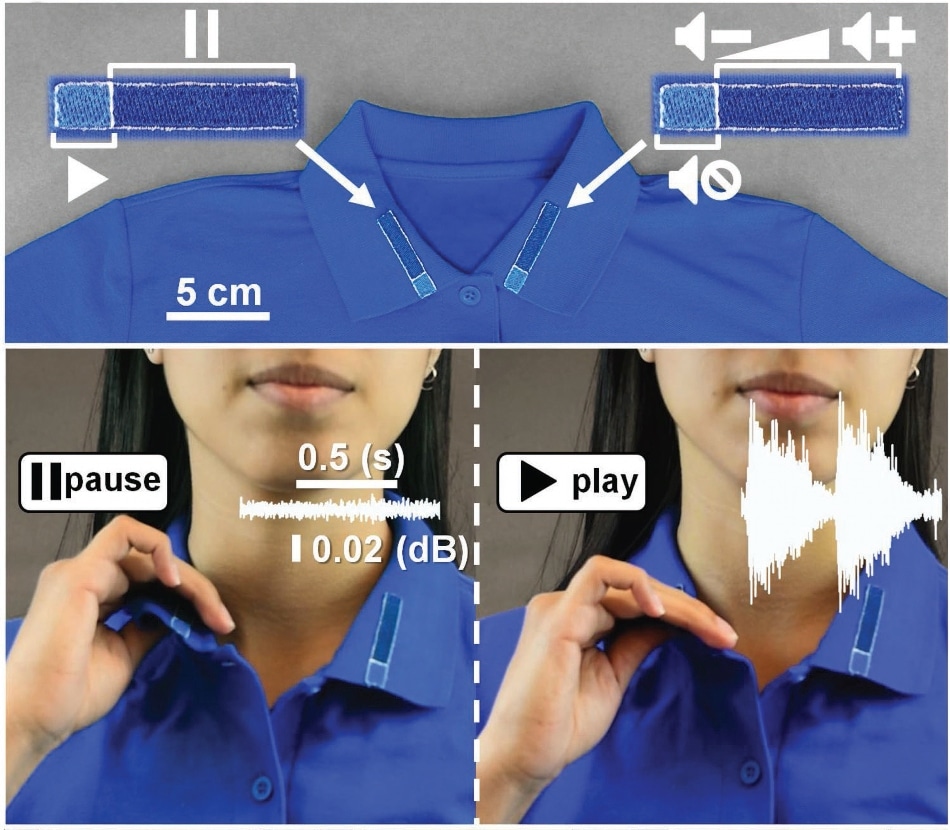Aug 12 2019
An innovative addition to wearers’ wardrobe may soon help them to turn on the lights and music, while simultaneously keeping them fresh, fashionable, safe, dry, and clean from the new virus that is going around.
 Purdue waterproof, breathable and antibacterial self-powered clothing is based on omniphobic triboelectric nanogenerators. (Image credit: Ramses Martinez/Purdue University)
Purdue waterproof, breathable and antibacterial self-powered clothing is based on omniphobic triboelectric nanogenerators. (Image credit: Ramses Martinez/Purdue University)
Researchers at Purdue University have created a new fabric innovation that enables wearers to regulate electronic devices via clothing.
It is the first time there is a technique capable to transform any existing cloth item or textile into a self-powered e-textile containing sensors, music players or simple illumination displays using simple embroidery without the need for expensive fabrication processes requiring complex steps or expensive equipment.
Ramses Martinez, Assistant Professor, School of Industrial Engineering and Weldon School of Biomedical Engineering, Purdue University
The technology has been described in the July 25th, 2019 edition of Advanced Functional Materials.
“For the first time, it is possible to fabricate textiles that can protect you from rain, stains, and bacteria while they harvest the energy of the user to power textile-based electronics,” Martinez stated. “These self-powered e-textiles also constitute an important advancement in the development of wearable machine-human interfaces, which now can be washed many times in a conventional washing machine without apparent degradation.”
According to Martinez, the self-powered, waterproof, antibacterial, and breathable clothing developed by the Purdue team is based on omniphobic triboelectric nanogenerators (RF-TENGs). Using simple embroidery and fluorinated molecules, the RF-TENG technology integrates tiny electronic components and converts a piece of clothing into a mechanism for driving devices.
The Purdue researchers informed that the RF-TENG technology is similar to having a wearable remote control that also keeps stains, odors, bacteria, and rain away from the wearer.
While fashion has evolved significantly during the last centuries and has easily adopted recently developed high-performance materials, there are very few examples of clothes on the market that interact with the user. Having an interface with a machine that we are constantly wearing sounds like the most convenient approach for a seamless communication with machines and the Internet of Things.
Ramses Martinez, Assistant Professor, School of Industrial Engineering and Weldon School of Biomedical Engineering, Purdue University
The RF-TENG technology is being patented via the Purdue Research Foundation Office of Technology Commercialization. The investigators are seeking partners to test and commercialize their new technology.
The researchers’ work aligns with Purdue’s Giant Leaps celebration of the university’s global developments in health and artificial intelligence as part of Purdue’s 150th anniversary. It is one among the four themes of the yearlong celebration’s Ideas Festival, designed to demonstrate Purdue as an intellectual hub solving real-world problems.